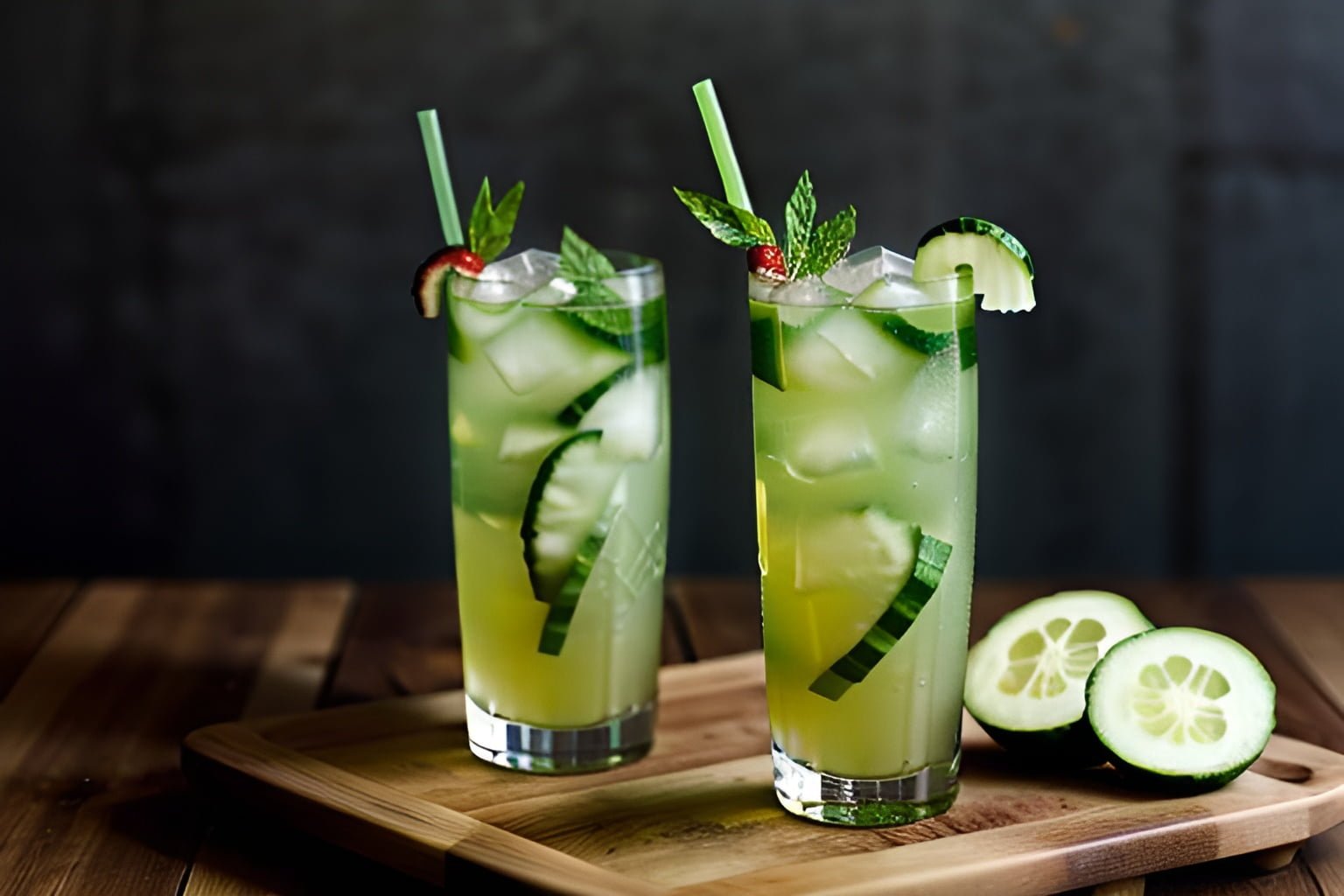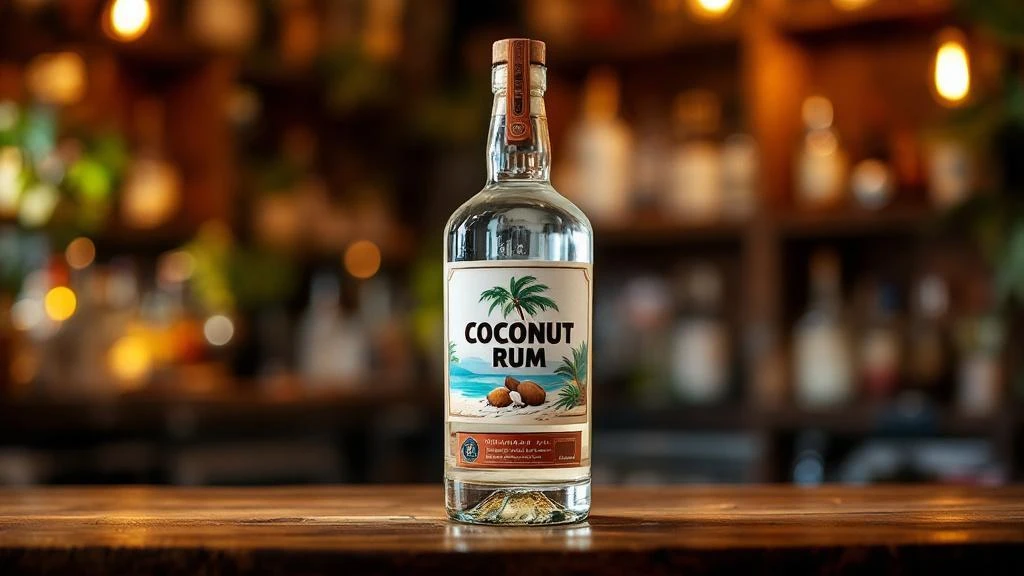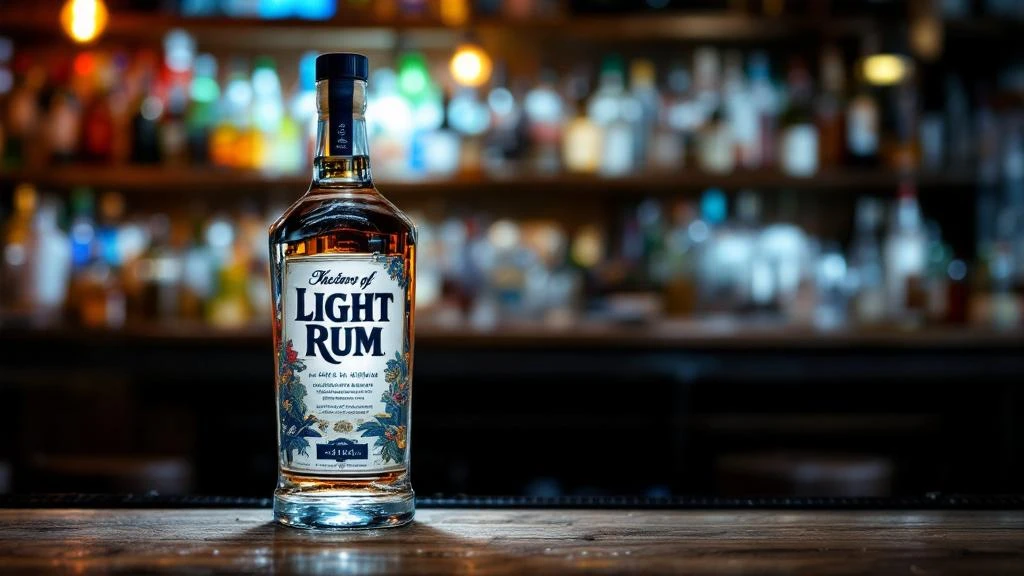Picture this: you’re relaxing at home on a laid-back weekend, sipping on an artisanal cocktail that you just crafted yourself. Such a premium drink, flavored with fresh herbed aromas and the enchanting spices that make your taste buds sing. Sounds delightful, right?
Welcome, dear readers, to our guide on Using Herbs and Spices in Cocktails.
With some herbs from your home garden or spice rack, you too can create these mixological masterpieces.
Here are a few key takeaways to anticipate as you stir your way through this article:
- Understanding the delicate balance between herbs, spices, and beverages.
- Exploring the best pairings of herbs and cocktails for a refreshing summer spritz or a comforting winter warmer.
- Learning the intricate nature of muddling and other techniques to draw out the incredible flavors of your chosen spices and herbs.
- Real-life tips from my experiences behind the bar that will remind you to experiment with boldness, yet remember that subtlety often holds the key to cocktail perfection.
- Finally, discovering how to store herbs and spices properly for your bartending escapades, because freshness matters!
Prepare yourselves for a flavor-packed journey that will surely spice up your bartending skills and awaken your senses to a whole new world of cocktail-making. Cheers!
Adding Flavor and Aroma with Herbs and Spices

Injecting a host of flavors and aromas into cocktails using herbs and spices is not just about the artistry of mixology; it’s also firmly rooted in science.
As a seasoned bartender with over a decade of experience, I can confidently vouch for the transformative power of these humble ingredients. A sprig of mint, a hint of cinnamon, or a dash of ginger can work wonders, turning a humdrum drink into an extraordinary concoction.
Here are a few of my top tips and tricks that I have honed over the years to add flavor and aroma to cocktails using various herbs and spices:
- Always go for fresh herbs: Fresh herbs such as mint, basil, and cilantro impart a more vibrant flavor profile than their dried counterparts.
- Muddle wisely: Over-muddling will break the delicate veins in a mint leaf, releasing a bitter compound that can ruin your cocktail. Thus, it’s all about giving it a gentle press to release aroma, not a hard squish.
- Infuse spirits with spices: Spices like cinnamon, nutmeg, or star anise can be introduced into spirits via infusion, offering an excess of delightful aromatics.
Remember, the herbs and spices should harmonize with the other elements in the cocktail, not overrule them. Each ingredient is a star in its own right, and the magic lies in the balance. Dare to experiment, and you might just invent a brand-new flavor pairing that’s nothing short of a mixological masterpiece.
Choosing the Right Herbs and Spices
Choosing the right herbs and spices for your cocktail can be a true game-changer. It’s like stepping into a completely new arena of flavors, where every decision can lead to a unique blend that could potentially blow your mind. However, ensuring a good mix does require some expertise in understanding the flavor profiles of different herbs and spices.
There are a plethora of herbs and spices available, each bringing a unique flavor profile to the table. The trick lies in understanding these differences and knowing when to use which. For instance, mint works beautifully with rum, while basil pairs wonderfully with gin. Similarly, certain spices like cinnamon and cloves complement darker spirits like whiskey and brandy, adding a touch of warmth and complexity.
Here are some steps to guide you in choosing the right herbs and spices for your cocktail:
- Identify the Base Spirit: Understanding the flavor profile of your base spirit is crucial. For instance, vodka is a neutral spirit and can work with a wider range of herbs and spices.
- Experiment: Don’t be afraid to experiment. It’s through improvisation and experimentation that many iconic cocktails were born.
- Balance is Key: The essence of cocktail mixing lies in maintaining a balance. Ensure your spice or herb doesn’t overpower the rest of the ingredients.
- Take Aroma into Account: Olfactory senses play a crucial role in taste perception. Hence, incorporating herbs and spices with contrast or complementary aromas can enhance the drink’s overall appeal.
Muddling Techniques in Cocktail Preparation
The art of bartending goes far beyond pouring a drink into a glass; it’s the subtle techniques and the intimate knowledge of ingredients that truly sets an expert bartender apart. One such essential technique is muddling.
From my personal experiences behind the bar and what I’ve learnt over the years, muddling is an incredible technique that helps unlock the hidden flavors and aromas embedded within herbs and spices, transforming an ordinary cocktail into an extraordinary sensory feast.
Muddling, simply put, refers to the process of pressing fresh herbs, fruits or spices at the bottom of a glass or shaker to release their flavors. The key, however, is to do so gently and without bruising the ingredients, unless you would like a cocktail that’s bitter or overpowered by a particular taste.
Now let’s dig into some muddling techniques, as it’s an art as much as it is a science:
- Crushing vs Pressing: When using softer ingredients like mint or basil, a gentle press is sufficient. For firmer ones, like a cucumber or raw ginger, a more vigorous crush might be needed. Moderation is critical here; you want to release those flavors without destroying the texture of the ingredient.
- Use the right tool: Not all muddlers are created equal. Some are flat, some are rounded, and others even have teeth. Which one you choose can greatly impact the outcome of your cocktail. From my experience, I find that flat muddlers are superb for softer ingredients while toothed ones are perfect for harder ones.
- Muddling Order: This might seem trivial but trust me, the order in which you muddle your ingredients can significantly affect your cocktail. In my opinion, it’s always better to muddle spices and herbs first, then add fruits or sweeteners. Doing so ensures a proper release of flavors.
Below is a quick reference table about various muddling techniques and when to use them:
| Technique | Used For |
|---|---|
| Gentle Pressing | Softer ingredients like mint, basil |
| Vigorous Crushing | Harder ingredients like cucumber, raw ginger |
| Use flat muddler | Softer ingredients |
| Use toothed muddler | Harder ingredients |
| Muddling order (spices first) | All cocktails |
Muddling is a technique every bartender should master, as it can make all the difference to the quality of a cocktail. It’s an art I’ve come to cherish and respect, for I’ve seen its power to transform an everyday drink into a symphony of flavors – a symphony that has the potential to turn any occasion into a sophisticated affair.
Infusing Spirits with Herbs and Spices

The beauty of cocktails lies in the depth and variety of flavors they embody, and a key way to enhance these flavors is through infusing spirits with herbs and spices. As a seasoned bartender and cocktail enthusiast, I can confidently say that it’s an art form that elevates the drinking experience.
When infusing spirits with herbs and spices, it’s not only about the flavor. It’s about creating an emotional connection with the drinker. The sight, smell, taste, and even the story behind a cocktail can stir memories, arouse emotions and create unique experiences. And that is the real beauty of this craft.
Homing in on my personal experiences, here are some tips for infusing spirits:
- Always pick fresh herbs: The fresher the better, as fresh herbs impart strong flavors. You can pick them from your backyard or from a local grocery store. I remember infusing a bottle of vodka with sprigs of rosemary from my small kitchen garden for a get-together, and it was an instant hit!
- Be patient: The flavor extraction process is slow. For best results, allow your concoction to sit undisturbed for at least a couple of days, if not a week.
- Tailor to taste: Not all herbs and spices will work with all spirits. It’s all about experimenting and finding your unique mix. For instance, my winning combination is gin infused with sage.
To wrap it up, infusing spirits with herbs and spices needs a bit of science, a dash of creativity, a sprinkle of patience, and a whole lot of love. So, roll up your sleeves, get that spirit, find your magic herb or spice, make your infusion, and create a cocktail that tantalizes the senses and warms the heart!
Creating Unique Syrups and Infusions
Creating unique syrups and infusions in cocktails using herbs and spices is one of my favorite parts of experimenting as a bartender. It’s an open invitation to express your creativity and impress your guests. Not to mention, it’s a fantastic way to liven up any cocktail party and add an element of surprise.
To start with, let’s clarify the terms we’re working with here. Syrups are basically a sweet liquid made by dissolving sugar in water, often infused with various flavors. Infusions, on the other hand, involve steeping ingredients in a liquid (like alcohol or water) until the liquid absorbs the flavors.
In my personal experience, making syrups and infusions is easier than you think. The trick lies in choosing flavors that complement your drinks and yet are unique enough to make your cocktail stand apart.
Key Steps to Creating Unique Syrups and Infusions:
- Choose your base: The first step is to choose your base. This can be anything from a spirit of your choice to a simple sugar syrup.
- Select your herbs and spices: Think beyond the average. You can use classic herbs like mint or rosemary or delve into eclectic flavors like lavender or Szechuan peppercorn.
- Infuse: For syrups, add your herbs or spices to boiling water and sugar, let it simmer, then strain after it cools. For spirits, simply add the herbs/spices in a bottle of the spirit and let it sit for a week or so.
- Experiment: Don’t be afraid of getting it wrong. You can always adjust and try again.
Creating Unique Syrups and Infusions
| Base | Herbs/Spices | Infusion Time |
|---|---|---|
| Vodka | Vanilla Beans | 1 Week |
| Sugar Syrup | Cinnamon Sticks | 24 Hour |
| Whiskey | Sliced Fresh Ginger | 3 Days |
| Simple Syrup | Fresh Mint Leaves | 24 Hours |
| Rum | Szechuan Peppercorn | 1 Week |
Creating unique syrups and infusions is an exhilarating task. It’s like playing a mad scientist in your own home bar, mixing and matching flavors to create something special. The thrill of getting that one-of-a-kind taste is what keeps me coming back for more.
Remember, the world of herbs and spices is so diverse, every little step in your adventure can lead you to a fascinating new discovery. Happy experimenting!
Garnishing with Fresh Herbs and Spices
The art of crafting cocktails is as much about the flavors as it is about presentation. Garnishing with fresh herbs and spices can really elevate a drink, not only improving its aesthetic but also its taste and aroma.
Harnessing the power of different herbs and plants can infuse your drinks with a new depth and range of flavors, for vibrant and refreshing concoctions.
Here is some guidance on how to use these naturals accents effectively:
- Fresh garnishes can enhance both the visual appeal and taste of a cocktail. Fragrant herbs like mint, basil, or rosemary can be the perfect complements, lending refreshing, earthy notes.
- Not all garnishes are for drinking. Some, like star anise or cinnamon sticks, might be added mostly for aesthetics or aroma.
- When adding a garnish, be gentle. You don’t want to bruise the herbs. Some are delicate, and aggressive handling can cause them to lose their flavor and aroma prematurely.
- Finally, think about how the garnish will work with the cocktail in practical terms. Is it easy to drink with the garnish in place? Will it get in the way? If so, adjust accordingly.
I’ve always found that herbs and spices can truly transform the simplest cocktail into something special. I recall once attending a party where the bartender garnished a classic gin and tonic with a sprig of rosemary and a few pink peppercorns. It took the drink to the next level of sophistication and flavor complexity.
Remember, when it comes to garnishing with herbs and spices, don’t be afraid to experiment. Find what works for you and flex your creativity. After all, cocktail crafting at its best is a blend of science and artistry.
Pairing Herbs and Spices with Specific Spirits
Without a doubt, the artful incorporation of herbs and spices into cocktails can genuinely transform your mixed drink game. Finding that perfect harmony between your chosen spirit and a complementary flavor can elevate a cocktail from good to extraordinary.
Let’s explore the pairings that have fascinated me in the many years I’ve spent behind the bar.
- Tequila and Cilantro: I discovered the magical blend of cilantro and tequila purely by chance one sunny afternoon. The earthy yet slightly citrusy notes of cilantro pair beautifully with the rich, slightly smoky flavor of tequila. A cilantro-infused Margarita, for instance, can be a game changer.
- Gin and Rosemary: Two words: simply divine! The fragrant, evergreen essence of rosemary couples remarkably well with the floral undertones typical of gin. A Rosemary Collins cocktail is a classic example of this pairing, and it never disappoints.
- Vodka and Basil: Fresh and peppery, basil provides an effortless bridge to the smooth neutrality of vodka. A Basil Vodka Gimlet can awaken your senses and leave you with a remarkable experience.
- Whiskey and Cinnamon: Whiskey, with its deep and robust complexity, is wonderfully complemented by the warming sweetness of cinnamon. From a Cinnamon Old Fashioned to a Whiskey Cider, this pairing brings a cozy feel, especially on cold winter nights.
- Rum and Mint: Commonly found in the classic Mojito, the combo of rum and mint offers a refreshing, cooling contrast to rum’s sugar cane-derived sweetness. The result? A well-rounded flavor explosion.
Keep in mind that these examples are just the tip of the iceberg. The true beauty of cocktail creation lies in unique experimentation. So don’t be afraid to mix and match your spirits with different herbs and spices. You never know, you might stumble upon your next favorite cocktail. After all, in the world of mixology, the glass is always half full… of potential.
Using Herbs and Spices in Classic Cocktails
Using herbs and spices in classic cocktails can truly transform an ordinary drink into an extraordinary one. These ingredients not only add wonderful aromas, but they also enhance the flavor profiles and even give a vibrant look to your cocktails. Having spent years behind the cocktail counter, I’ve witnessed firsthand the magic that these cocktail additions can conjure up.
Here are some of my favorite examples:
- Mojito: A standout classic, the Mojito is an epitome of how effectively herbs can improve a cocktail. The delicate muddling of fresh mint leaves with sugar and lime juice creates a refreshing base, which when topped with rum and a splash of soda, makes a richly flavorful and aromatic drink.
- Bloody Mary: This is an absolute classic where spices play a significant role. Pepper, celery salt, and a few dashes of Worcestershire sauce mixed with tomato juice and vodka culminate in a spicy, umami-rich drink that is guaranteed to kickstart your day on a spicy note.
- Old Fashioned: I love adding a twist to this traditional cocktail by introducing some orange zest and a hint of cinnamon. It accentuates the essence of the whisky and adds a subtle, wintry spice to it.
In my experience, using herbs and spices in cocktails should be treated like a culinary adventure. Experiment with different combinations, pay attention to how flavors interact, and don’t be afraid to go off the beaten path – you might just create your own classic cocktail!
Experimenting with Modern Herb and Spice Innovations
The trend of incorporating unconventional herbs and spices into cocktails is not just making the drinking scene more interesting, but it’s also a testament to the creativity and resourcefulness of today’s mixologists. Like me, many others are obsessed with the thrill of introducing surprising twists to traditional concoctions, making every cocktail a unique encounter.
Let’s take a quick whirl through these fascinating innovations:
- Floral Infusions: From elderflower to lavender, florals are taking center stage. Giving a lighter, sweeter taste, they can completely transform a cocktail. I once tried rosemary-infused gin and it was a complete game changer!
- Exotic Spices: More bartenders are now turning toward globally inspired flavors. Ever tried a cardamom-spiced cocktail? It’s surprisingly refreshing and adds a unique kick.
- Local Herbal Blends: Mixologists are looking more to their local gardens for unique, fresh flavours. Think artisanal and think local, like incorporating fresh tarragon or fennel from the backyard!
- Flavored Ice Cubes: This is an ingenious trick! Infusing ice cubes with herbs and spices creates a multi-layered taste progression as the cube melts. Just imagine your Margarita gradually unveiling subtle hints of cilantro and chili – quite a fiesta!
In conclusion, the adventurous and immersive world of modern cocktail making demands an open mind and a fearless attitude.
Whether you’re a seasoned mixologist or an excited newbie like me, the thrill of experimenting with innovative combinations of herbs and spices can be both rewarding and exhilarating. Remember, the art of mixology is never static, the possibilities are endless, so why not shake it up a little?
Conclusion
As one who reveres the art of mixology, I can’t help but profess the remarkable transformation herbs and spices bring to our beloved cocktails. The tantalizing dance of flavors, the sensory awakening, and the overall sophistication they infuse into drinks is simply mesmerizing.
There are few things more enjoyable than a refreshing basil-infused margarita on a hot day or the comforting warmth of a cinnamon-spiced hot toddy during the cold winter months. Herbs and spices breathe life into cocktails, taking them from simple beverages to exquisite compositions that often leave a lasting impression.
The beauty of utilizing herbs and spices in cocktail making is the sheer diversity of flavor profiles one can achieve. Each herb and spice carries its own unique flavor characteristic and therapeutic value apart from just pleasing our palates. Thyme, mint, cilantro, or basil; cardamom, cinnamon, or star anise, the opportunities are boundless. All it really takes is creativity, some experimentation, and of course, a never-ending love for great cocktails.
As someone who’s spent considerable time behind the bar, I guarantee incorporating these elements will offer a drinking experience like no other. To all cocktail enthusiasts out there, make herbs and spices your next inclusion, your bar menu and patrons will thank you. Let’s continue to elevate and celebrate the fascinating world of mixology.
Frequently Asked Question
Why use herbs and spices in cocktail making?
Using herbs and spices in cocktails can add unique flavor profiles and complexity to your drinks. They not only brighten up the taste but also add an aesthetic appeal, making your cocktail drink more inviting and interesting.
Which herbs are commonly used in cocktails?
Some of the most commonly used herbs in cocktails include mint, basil, cilantro, rosemary, and thyme. These herbs have distinct flavors that can enhance or provide a pleasant contrast to your drink’s taste.
How do you use dried spices in cocktails?
Dried spices can be directly added to cocktails or they can be used in syrups and infusions. They should be used sparingly because their flavor can be more concentrated than fresh ones. Be sure to double strain your cocktail to remove any little pieces that could make your drink gritty.
Which spices are great for cocktails?
Nutmeg, cinnamon, star anise, cardamom, peppers, and cloves are some spices that are usually used in cocktail making. These spices can add a hint of warmth and complexity to the drink.
What’s the best way to extract flavors from fresh herbs in cocktails?
The most common method is ‘muddling.’ You can use a muddler to lightly crush herbs at the bottom of the glass, which helps to release their essential oils and fully imbue your cocktail with their flavor.
Can I grow my own herbs for use in cocktails?
Absolutely! Growing your own herbs for cocktails can not only be cost-effective but also allows you to have the freshest ingredients on hand. Plus, you can experiment with different varieties that might not be available at your local store.
Should I use fresh or dried herbs in cocktails?
While both can be used, fresh herbs often offer a stronger, more authentic flavor. However, dried herbs can offer convenience and a longer shelf life while still bringing a robust flavor to your cocktails.
How can I incorporate spicy flavors into my cocktails?
You can add spicy flavors to your cocktails using ingredients like fresh jalapenos, cayenne pepper, or even a spicy liquor. It’s all about experimenting to find the right balance for your palate.
Can I use herbs and spices in both alcoholic and non-alcoholic cocktails?
Yes, herbs and spices can be used effectively in both alcoholic and non-alcoholic “mocktails.” They can significantly enhance the flavor and make even simple non-alcoholic drinks taste exotic.
Do certain herbs and spices pair better with specific types of alcohol?
Yes, specific herbs and spices do pair better with certain spirits. For instance, gin often pairs well with rosemary due to its botanical nature. Bourbon can be beautifully complemented by cinnamon. However, part of the fun of mixology is experimenting and finding your own favorite combinations!











